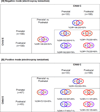Reconstructing pre-natal and early childhood exposure to multi-class organic chemicals using teeth: Towards a retrospective temporal exposome
- PMID: 26134987
- PMCID: PMC4545311
- DOI: 10.1016/j.envint.2015.05.010
Reconstructing pre-natal and early childhood exposure to multi-class organic chemicals using teeth: Towards a retrospective temporal exposome
Keywords: Biomarker; Children; Dentine; Exposome; Metabolomics; Non-targeted profiling; Organics; Prenatal; Teeth.
Figures





References
-
- Andersen SL. Trajectories of brain development: point of vulnerability or window of opportunity? Neuroscience and biobehavioral reviews. 2003;27:3–18. - PubMed
-
- Arora M, Chan SW, Kennedy BJ, Sharma A, Crisante D, Walker DM. Spatial distribution of lead in the roots of human primary teeth. J Trace Elem Med Biol. 2004;18:135–139. - PubMed
-
- Arora M, Hare D, Austin C, Smith DR, Doble P. Spatial distribution of manganese in enamel and coronal dentine of human primary teeth. Sci Total Environ. 2011;409:1315–1319. - PubMed
Grants and funding
LinkOut - more resources
Full Text Sources
Other Literature Sources

